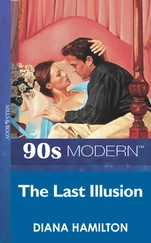Bruce Hood - The Self Illusion
Здесь есть возможность читать онлайн «Bruce Hood - The Self Illusion» весь текст электронной книги совершенно бесплатно (целиком полную версию без сокращений). В некоторых случаях можно слушать аудио, скачать через торрент в формате fb2 и присутствует краткое содержание. ISBN: , Издательство: Constable & Robinson, Жанр: Старинная литература, на английском языке. Описание произведения, (предисловие) а так же отзывы посетителей доступны на портале библиотеки ЛибКат.
- Название:The Self Illusion
- Автор:
- Издательство:Constable & Robinson
- Жанр:
- Год:неизвестен
- ISBN:9781780331379
- Рейтинг книги:5 / 5. Голосов: 1
-
Избранное:Добавить в избранное
- Отзывы:
-
Ваша оценка:
- 100
- 1
- 2
- 3
- 4
- 5
The Self Illusion: краткое содержание, описание и аннотация
Предлагаем к чтению аннотацию, описание, краткое содержание или предисловие (зависит от того, что написал сам автор книги «The Self Illusion»). Если вы не нашли необходимую информацию о книге — напишите в комментариях, мы постараемся отыскать её.
The Self Illusion — читать онлайн бесплатно полную книгу (весь текст) целиком
Ниже представлен текст книги, разбитый по страницам. Система сохранения места последней прочитанной страницы, позволяет с удобством читать онлайн бесплатно книгу «The Self Illusion», без необходимости каждый раз заново искать на чём Вы остановились. Поставьте закладку, и сможете в любой момент перейти на страницу, на которой закончили чтение.
Интервал:
Закладка:
36. R. Sapolsky, ‘The uniqueness of humans.’ http://www.ted.com/talks/robert_sapolsky_the_uniqueness_of_humans.html (TED talk, 2009).
37. R. I. M. Dunbar and S. Shultz, ‘Evolution in the social brain’, Science , 317 (2007), 1344–7.
38. S.R. Ott and S.M. Rogers, ‘Gregarious desert locusts have substantially larger brains with altered proportions compared with the solitarious phase’ , Proceedings of the Royal Society, B, 277 (2010), 3087–96.
39. Personal communication with Dunbar.
40. A. Whiten and R.W. Byrne, Machiavellian Intelligence: Social Expertise and the Evolution of Intellect in Monkeys, Apes and Humans. (Oxford: OUP, 1988).
41. M. Gladwell, The Tipping Point. How Little Things Can Make a Big Difference (London: Little, Brown and Co, 2000).
42. T. Nagel, ‘What is it like to be a bat?’, Philosophical Review , 83 (1974), 433–50.
43. This anecdote is relayed by A. Gopnik, The Philosophical Baby: What Children’s Minds Tell Us About Truth, Love, and the Meaning of Life (New York: Farrar, Strauss and Giroux, 2009).
2 The Machiavellian Baby
1. J. M. Baldwin, Development and Evolution (Boston, MA: Adamant Media Corporation, 1902/2002).
2. J. Locke, An Essay Concerning Human Understanding (London, 1690).
3. W. James, Principles of Psychology (New York, NY: Henry Holt, 1890).
4. A. Gopnik, ‘What are babies really thinking?’ http://blog.ted.com/2011/10/10/what-are-babies-really-thinking-alison-gopnik-on-ted-com/ (TED talk, 2011).
5. R. Byrne and A. Whiten, Machiavellian Intelligence (Oxford: Oxford University Press, 1988).
6. N. Kanwisher, J. McDermott, and M. Chun, ‘The fusiform face area: A module in human extrastriate cortex specialized for the perception of faces’, Journal of Neuroscience , 17 (1997), 4302–11. Actually, there is now some dispute whether the area is specific to faces or any special category of well-known objects. Given that faces are the most common diverse objects that we encounter, this suggests that the area probably evolved primarily for faces.
7. M. H. Johnson, S. Dziurawiec, H. Ellis and J. Morton, ‘Newborns’ preferential tracking for face-like stimuli and its subsequent decline’, Cognition , 40 (1991), 1–19.
8. O. Pascalis, M. de Haan and C. A. Nelson, ‘Is face processing species-specific during the first year of life?’, Science ,296 (2002), 1321–23.
9. Y. Sugita, ‘Face perception in monkeys reared with no exposure to faces’, Proceedings of the National Academy of Science, USA , 105 (2008), 394–98.
10. R. Le Grand, C. Mondloch, D. Maurer and H. P. Brent, ‘Early visual experience and face processing’, Nature , 410 (2001), 890.
11. M. Heron-Delaney, G. Anzures, J. S. Herbert, P. C. Quinn and A. M. Slater, ‘Perceptual training prevents the emergence of the other race effect during Infancy’, PLoS ONE , 6:5 (2011): e19858, doi:10.1371/journal.pone.0019858.
12. A. N. Meltzoff and M. K. Moore, ‘Imitation of facial and manual gestures by human neonates’, Science , 198 (1977), 75–8.
13. P. F. Ferrari, E. Visalberghi, A. Paukner, L. Fogassi, A. Ruggiero and S. J. Suomi, ‘Neonatal imitation in rhesus macaques’, PLoS Biology , 4:9 (September 2006): e302, doi:10.1371/journal.pbio.0040302.
14. J. Panksepp, Affective Neuroscience: The Foundations of Human and Animal Emotions (Series in Affective Science. New York, NY: Oxford University Press, 1998).
15. D. Leighton and C. Kluckhohn, Children of the People; the Navaho Individual and His Development (Cambridge, MA: Harvard University Press, 1947/69).
16. A. B. Fries, T. E. Ziegler, J. R. Kurian, S. Jacoris and S. D. Pollack, ‘Early experience in humans is associated with changes in neuropeptides critical for regulating social interaction’, Proceedings of the National Academy of Sciences of the United States of America , 102 (2005), 17237–40.
17. F. Strack, L. L. Martin and S. Stepper, ‘Inhibiting and facilitating conditions of the human smile: A non-obtrusive test of the facial feedback hypothesis’, Journal of Personality and Social Psychology , 54 (1988), 768–77.
18. R.E. Kraut and R.E. Johnston, ‘Social and emotional messages of smiling: An ethological account’, Journal of Personality and Social Psychology, 37(1979), 1539-53.
19. O. Epstein, G. D. Perkin and J. Cookson, Clinical Examination (Edinburgh: Elsevier Health Sciences, 2008), 408.
20. S. H. Fraiberg, ‘Blind infants and their mothers: An examination of the sign system’, in M. Lewis and L. Rosenblum (eds), The effect of the Infant on Its Caregiver (New York, NY: Wiley, 1974 pp. 215–232).
21. C. Darwin, The Expression of the Emotions in Man and Animals (London: John Murray, 1872).
22. V. Frankl, Man’s Search for Meaning (New York, NY: Simon and Schuster, 1959), 54–6.
23. T. Anderson, Den of Lions (New York, NY: Ballantine Books, 1994).
24. R. R. Provine, Laughter: A Scientific Investigation (New York, NY: Penguin 2001).
25. J. Panksepp and J, Burgdorf, ‘“Laughing” rats and the evolutionary antecedents of human joy?’, Physiology and Behavior , 79 (2003), 533–47.
26. L. Weiskrantz, J. Elliott and C. Darlington, ‘Preliminary observations on tickling oneself’, Nature , 230 (1971), 598–9.
27. S. J. Blakemore, D. M. Wolpert and C. D. Frith, ‘Central cancellation of self-produced tickle sensation’, Nature Neuroscience , 1 (1990), 635–40.
28. S. J. Blakemore, D. M. Wolpert and C. D. Frith, ‘Why can’t you tickle yourself?’, NeuroReport , 11 (2000), R11–16.
29. J. M. S. Pearce, ‘Some neurological aspects of laughter’, European Neurology , 52 (2004), 169–71.
30. There is a vast literature on newborns’ preferences for their mothers. On smell: J. M. Cernack and R. H. Porter, ‘Recognition of maternal axillary odors by infants’, Child Development , 56 (1985), 1593–8. On face: I. M. Bushnell, F. Sai and J. T. Mullen, ‘Neonatal recognition of the mother’s face’, British Journal of Developmental Psychology , 7 (1989), 3–15. On voice: A. J. DeCasper and M. J. Spence, ‘Prenatal maternal speech influences newborns’ perception of speech sounds’, Infant Behavior and Development , 9 (1986), 133–50.
31. W. C. Roedell and R. G. Slaby, ‘The role of distal and proximal interaction in infant social preference formation’, Developmental Psychology , 13 (1977), 266–73.
32. C. Ellsworth, D. Muir and S. Han, ‘Social-competence and person-object differentiation: An analysis of the still-face effect’, Developmental Psychology , 29 (1993), 63–73.
33. L. Murray, A. Fiori-Cowley, R. Hooper and P. Cooper, ‘The impact of postnatal depression and associated adversity on early mother-infant interactions and later infant outcome’, Child Development , 67 (1996), 2512–26.
34. H. R. Schaffer, The Child’s Entry into a Social World (London: Academic Press, 1984).
35. M. Lewis, ‘Social development’, in A. M. Slater and M. Lewis (eds) (Oxford: Oxford University Press, 2007). This provides a good overview of early social development pp.233–252.
36. K. Lorenz, ‘Die Angebornen Formen mogicher Erfahrung’, Zeitschrift fur Tierpsychologie , 5 (1943), 233–409.
37. W. Fullard and A. M. Reiling, ‘An investigation of Lorenz’s babyness’, Child Development , 50 (1976), 915–22.
38. S. E. Taylor, The Tending Instinct (New York, NY: Henry Holt, 2001).
Читать дальшеИнтервал:
Закладка:
Похожие книги на «The Self Illusion»
Представляем Вашему вниманию похожие книги на «The Self Illusion» списком для выбора. Мы отобрали схожую по названию и смыслу литературу в надежде предоставить читателям больше вариантов отыскать новые, интересные, ещё непрочитанные произведения.
Обсуждение, отзывы о книге «The Self Illusion» и просто собственные мнения читателей. Оставьте ваши комментарии, напишите, что Вы думаете о произведении, его смысле или главных героях. Укажите что конкретно понравилось, а что нет, и почему Вы так считаете.












